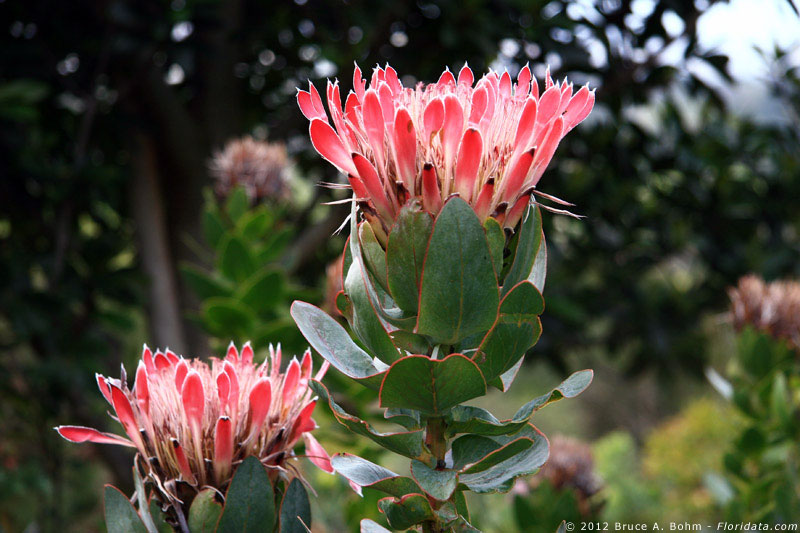

Proteaceae are a family of about 1775 species aligned in 75 genera (Mabberley, p. 702), the majority of which occur in tropical and subtropical habitats in the Southern Hemisphere, with centers of variation in Australia and South Africa. The southwestern Cape region of South Africa alone boasts 69 endemic species of Protea. Species of Protea are cultivated in the Hawaiian Islands, primarily on the south western slopes of Haleakalä, but are not considered to have become naturalized on the islands.

I have included two of the decorative species, Protea cynaroides, the king protea (see image), and P. lepidocarpodendron (image), the black bearded protea,.
The only species that qualified for inclusion in the flora are two species of Grevillea, G. robusta, the silk, she, or silver oak (see image), known in Hawaiian as `oka kilika or ha`ikü ke`oke`o; and G. banksii, (see image) the kahili flower or ha`ikü. Both species have been widely planted. The silk oak is a troublesome species insofar as it can out compete local trees for water and can invade marginal areas readily.
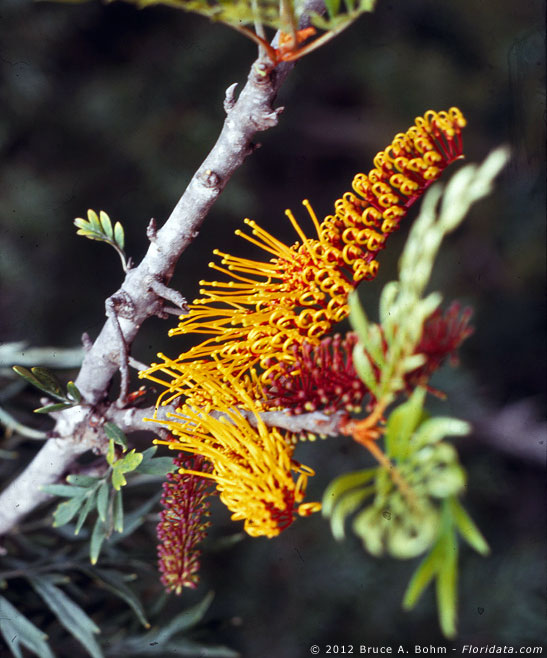
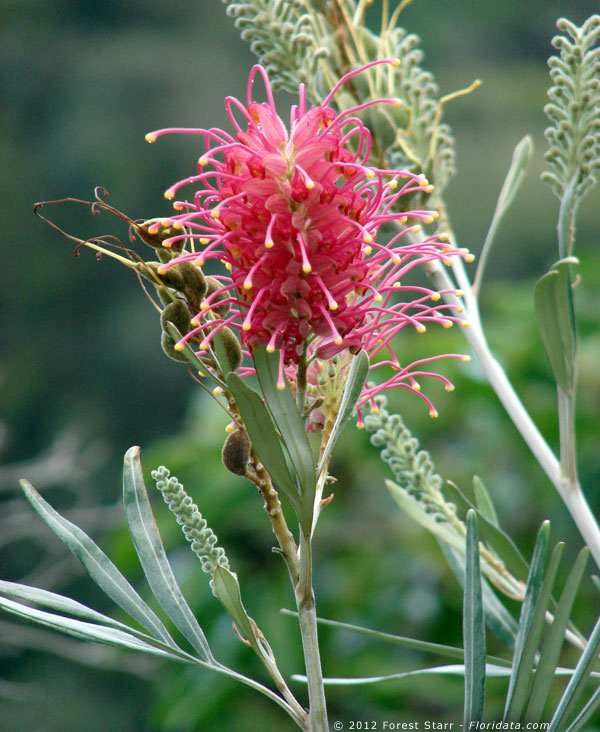
Although it is not formally listed in the Manual, mention should be made of the genus Macadamia which is probably familiar to almost everyone who has ever visited the islands. The genus, which consists of nine species, is native to Australia and eastern Malesia. Of the nine species, only two produce edible nuts; the others produce toxic compounds called cyanogenic glycosides (they produce hydrocyanic acid upon decomposition). Macadamia integrifolia (image), the species of commerce in the Hawaiian Islands, was originally introduced, in 1881, as a windbreak for sugar plantations. The most brand-visible macadamia nuts, or simply "mac" nuts, in the islands are shown (inset), although there are other commercial growers on the islands.
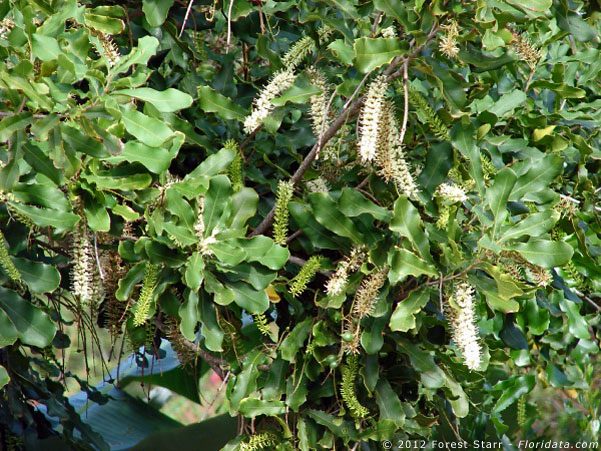
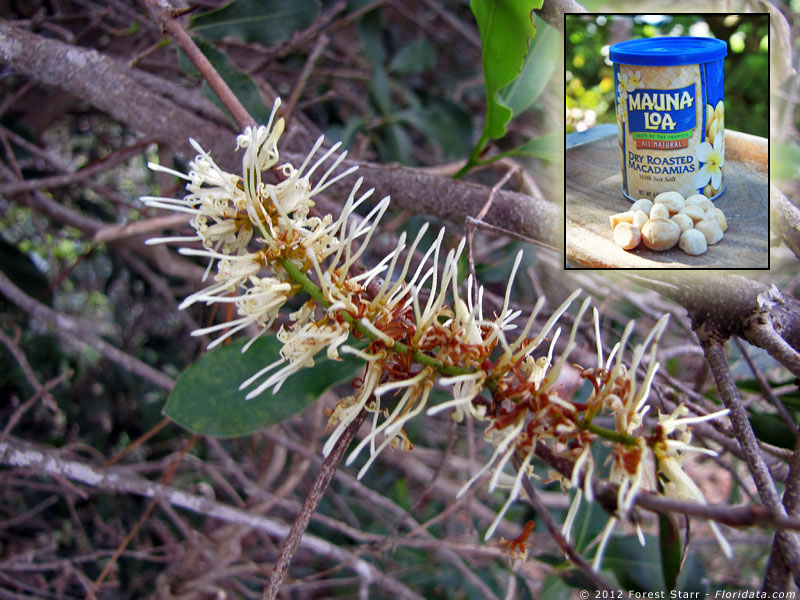
Two species of Ranunculus, the buttercups, are endemic on the islands, the rare R. hawaiensis (see photo) of dry sites at middle elevations on East Maui and the Big Island; and R. mauiensis, a species of wet places from all of the main islands except Ni`ihau, Kaho`olawe, and Läna`i. Anemone hupehensis. var. japonica (see image) the Japanese anemone, is a conspicuous element of disturbed areas in Hawai`i Volcano National Park. The photograph was taken of plants growing beside the boardwalk in the Devastation Trail area near Kïlauea Iki.

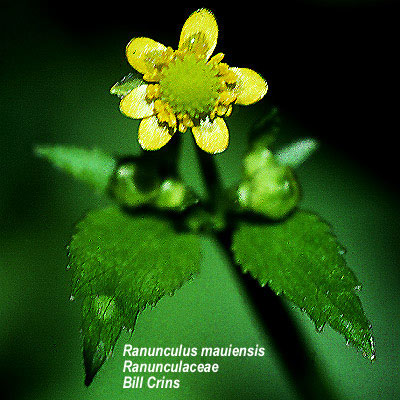
July 18, 2012